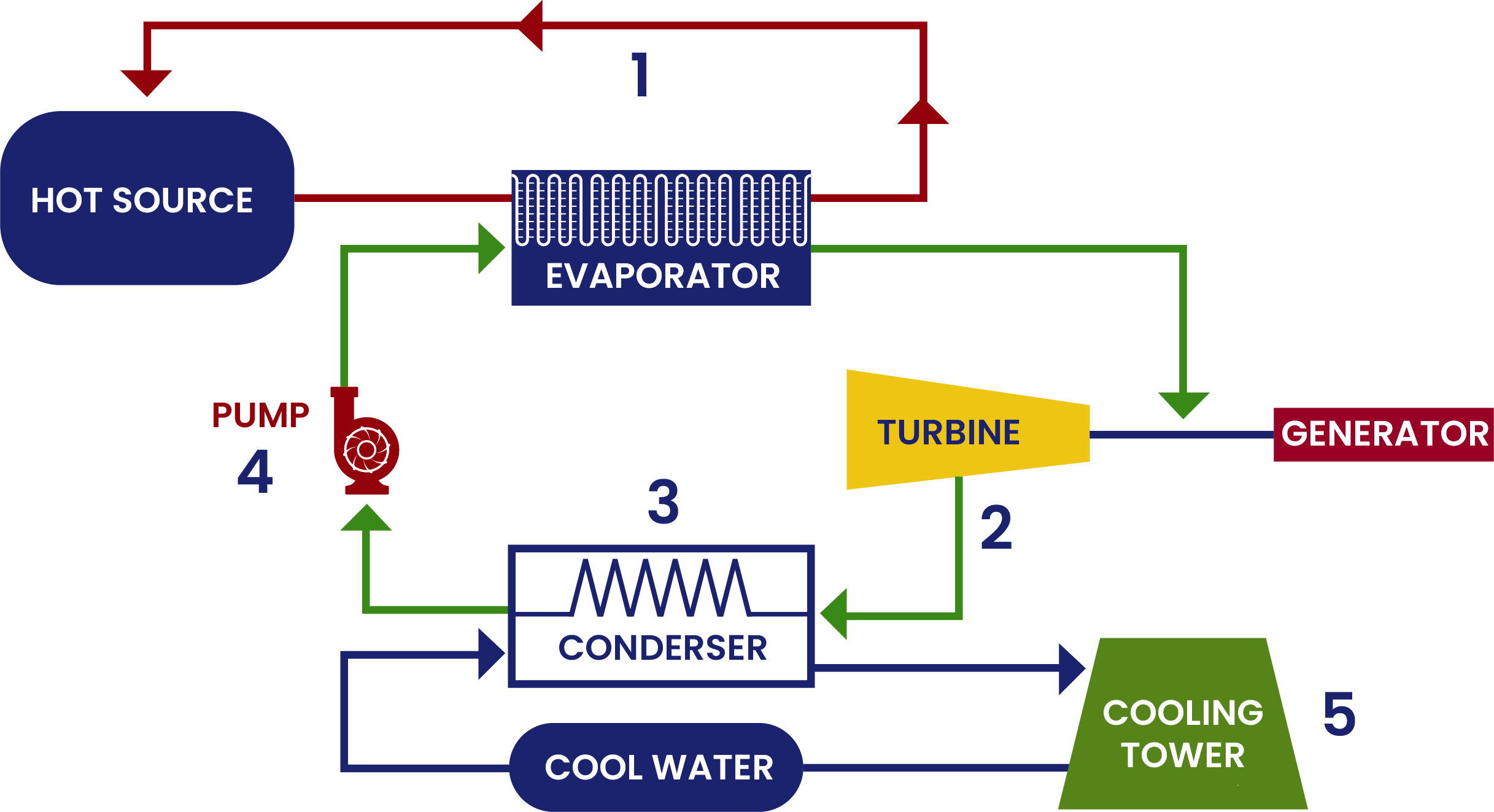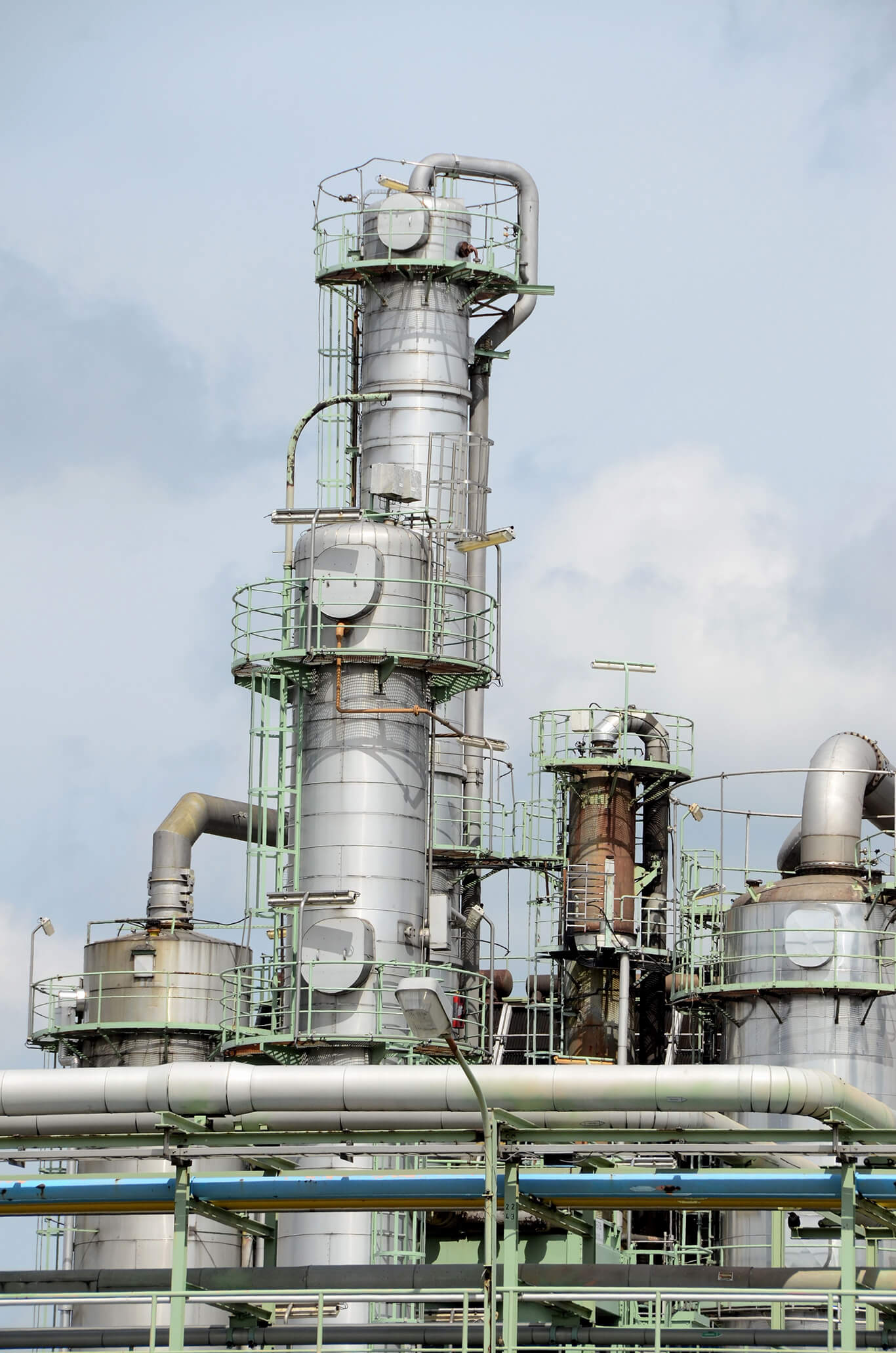
Organic Rankine Cycle Systems

The thermodynamic cycle of ORÇ is shown schematically in Figure 2. Same to the left ring
also called Temperature-Entropy or T-S diagram. The turbocharger uses the heat generated from the hot source to preheating and evaporates the appropriate organic working fluid in the evaporator (2 → 3 → 4). The organic liquid vapor energizes the electric turbine, which can be combined with the electric generator directly or through the reduction gear (4 → 5). The steam is then cooled with water or air and condensed in the condenser (5 → 1). The organic liquid is finally pumped into the preheater and evaporator (1 → 2); Thus, the sequence of operations in the closed loop circuit ends.
Some Important Advantages of ORC
Compared to steam turbine systems, ORÇ has some special advantages. Although the steam turbine is generally more efficient as it is used at high temperatures and pressures, ORÇ is preferred in many applications due to its specific features mentioned below.
- In ORÇ, it is not uncommon for the turbine to operate smoothly for more than 20 years, since the steam contacting the turbine blades is the steam of the clean working fluid.
- In addition, the organic working fluid is a high molecular weight substance while in the steam turbine. Smaller high velocity vapor molecules hit the turbine at high velocity, thus causing blade damage. This increases the maintenance and replacement frequency of the turbine and the total cost.
- Since ORÇ operates at lower temperatures and pressures, the mechanical and thermal stress in the components is lower compared to the steam turbine. This increases the life of the components.
- Since ORÇ operates at lower temperatures and pressures, there is no need for an operator in the work area. ORÇ can be controlled and operated remotely without the need for personnel. This significantly reduces the operating cost.
- An important advantage of ORÇ is that it can operate with relatively higher efficiency even at partial loads such as 10% of the nominal energy. This is particularly advantageous in some industrial applications where the input heat is in frequent motion and in Solar-Thermal applications where ORÇ can operate longer than steam turbines. Because in such applications, it can start working in the early hours of the morning when the sun rises and work until the late hours of the evening when the sun sets.
- Water use is not required as the working fluid is used instead of water / steam. In addition, there is no need for non-mineral water or other auxiliary systems that are usually required in steam systems. Therefore, the operation and control of the entire system is easier.
- In ORÇ, the turbine rotates at a lower speed compared to the steam turbine, which reduces the mechanical strain. It also allows a direct link between the turbine and the generator through the reduction gear system and its associated parts as an intermediary.
- High turbine efficiency (up to 85%) can be achieved with ORUÇ.
- In addition, ease of start-stop operations, automatic / continuous start-up, safe and quiet operation, high field compatibility (98% or more are not uncommon) and long life (20+ years) without serious maintenance are among the other advantages.
- In special cases where the generated energy is in the low MW range, ORÇ has a special economic advantage over steam turbines. Because the steam turbine requires an additional environmental system; This system is added to the cost and this is not small in economic terms.

